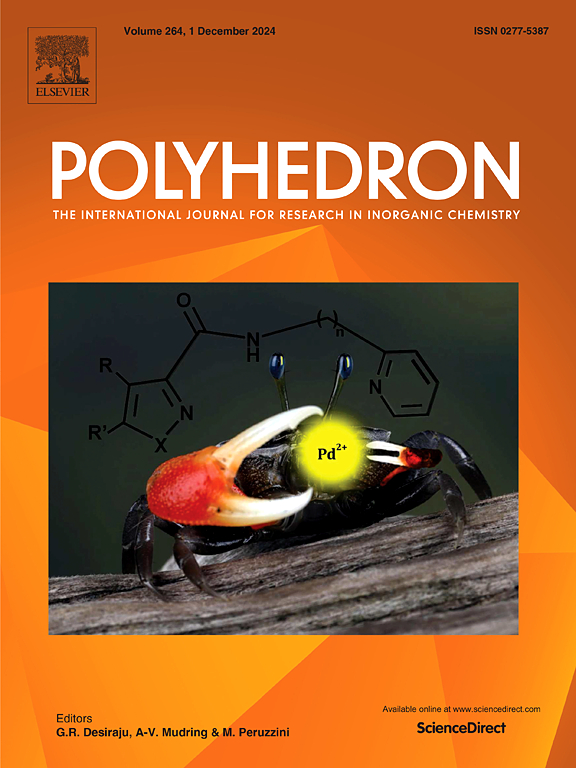The role of Li⋯F interactions in lithium and heterobimetallic lithium–magnesium complexes of the hexafluoroisopropoxide anion
IF 2.4
3区 化学
Q2 CHEMISTRY, INORGANIC & NUCLEAR
引用次数: 0
Abstract
As part of ongoing investigations of battery electrolytes and additives based on derivatives of 1,1,1,3,3,3-hexafluoroisopropanol, the solvent-free hexameric precursor [Li(μ3-OCH(CF3)2)]6 (1) was isolated and characterised by single-crystal X-ray diffraction and found to possess a ring-stacked hexagonal prismatic Li6 arrangement supported by Li⋯F interactions. To explore the behaviour of this fluoroalkoxide ligand further, the lithium magnesiate complexes [Li2(thf)4Mg(μ2-OCH(CF3)2)4] (2) and [Li3(thf)2(nBuMg)(μ3-OCH(CF3)2)4] (3) were also obtained; 2 from the reaction of the fluorinated alcohol with a 2:1 mixture of nBuLi:nBu2Mg, and 3 from the reaction of the alcohol with a 1:1 mixture of nBuLi:nBu2Mg. The structure of 3 is of particular interest, being based on a Li3MgO4 heterocubane arrangement which possesses a highly unusual 3:1 Li:Mg stoichiometry. The solid-state structures of 1–3 illustrate some of the range of vastly different geometries possible for s-block metal alkoxides and highlight the potential importance of Li⋯F interactions in molecular stabilisation.

求助全文
约1分钟内获得全文
求助全文
来源期刊

Polyhedron
化学-晶体学
CiteScore
4.90
自引率
7.70%
发文量
515
审稿时长
2 months
期刊介绍:
Polyhedron publishes original, fundamental, experimental and theoretical work of the highest quality in all the major areas of inorganic chemistry. This includes synthetic chemistry, coordination chemistry, organometallic chemistry, bioinorganic chemistry, and solid-state and materials chemistry.
Papers should be significant pieces of work, and all new compounds must be appropriately characterized. The inclusion of single-crystal X-ray structural data is strongly encouraged, but papers reporting only the X-ray structure determination of a single compound will usually not be considered. Papers on solid-state or materials chemistry will be expected to have a significant molecular chemistry component (such as the synthesis and characterization of the molecular precursors and/or a systematic study of the use of different precursors or reaction conditions) or demonstrate a cutting-edge application (for example inorganic materials for energy applications). Papers dealing only with stability constants are not considered.
 求助内容:
求助内容: 应助结果提醒方式:
应助结果提醒方式:


